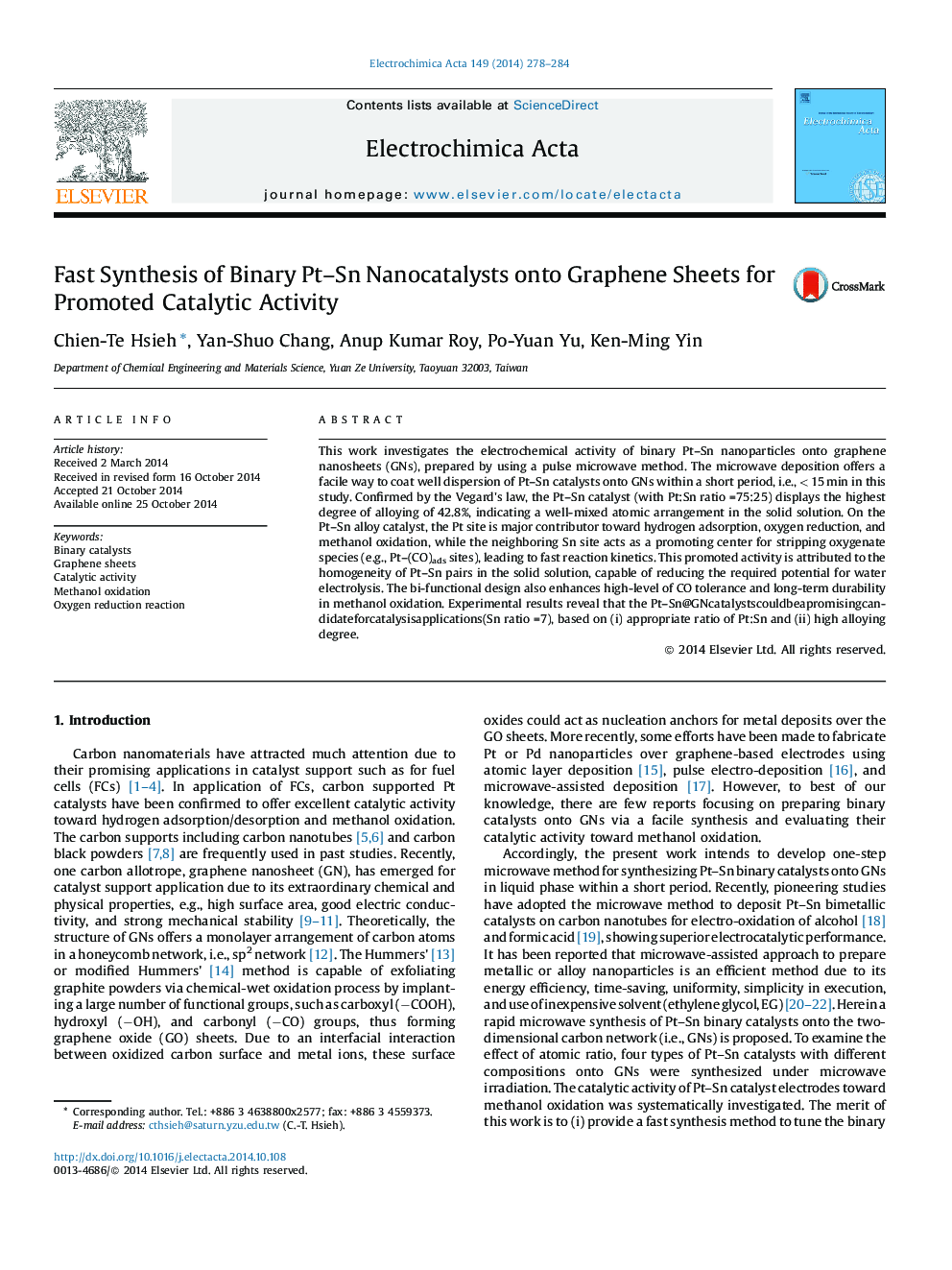| Article ID | Journal | Published Year | Pages | File Type |
|---|---|---|---|---|
| 184963 | Electrochimica Acta | 2014 | 7 Pages |
ABSTRACTThis work investigates the electrochemical activity of binary Pt–Sn nanoparticles onto graphene nanosheets (GNs), prepared by using a pulse microwave method. The microwave deposition offers a facile way to coat well dispersion of Pt–Sn catalysts onto GNs within a short period, i.e., < 15 min in this study. Confirmed by the Vegard's law, the Pt–Sn catalyst (with Pt:Sn ratio =75:25) displays the highest degree of alloying of 42.8%, indicating a well-mixed atomic arrangement in the solid solution. On the Pt–Sn alloy catalyst, the Pt site is major contributor toward hydrogen adsorption, oxygen reduction, and methanol oxidation, while the neighboring Sn site acts as a promoting center for stripping oxygenate species (e.g., Pt–(CO)ads sites), leading to fast reaction kinetics. This promoted activity is attributed to the homogeneity of Pt–Sn pairs in the solid solution, capable of reducing the required potential for water electrolysis. The bi-functional design also enhances high-level of CO tolerance and long-term durability in methanol oxidation. Experimental results reveal that the Pt–Sn@GNcatalystscouldbeapromisingcandidateforcatalysisapplications(Sn ratio =7), based on (i) appropriate ratio of Pt:Sn and (ii) high alloying degree.
